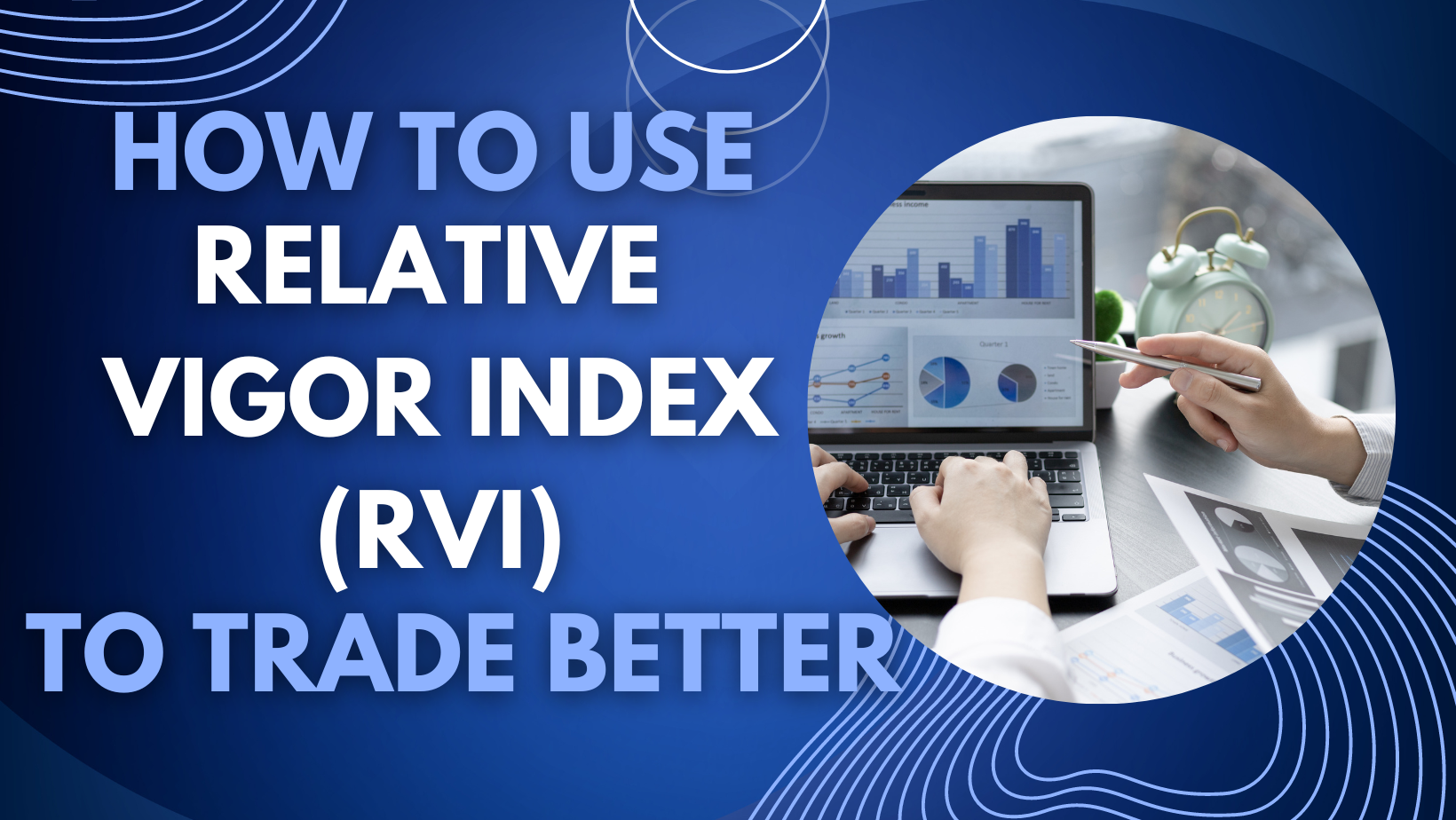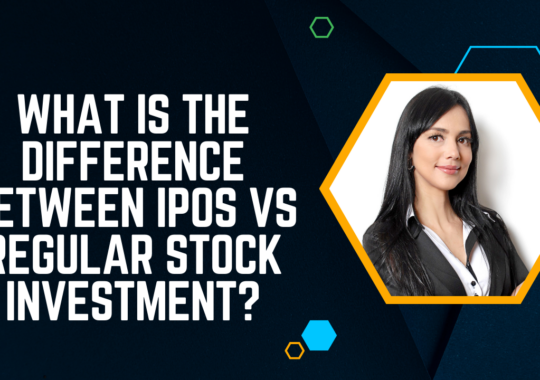As a trader, it’s important to have a solid understanding of technical analysis and the various indicators available to help inform your decision making. One of these indicators is the Relative Vigor Index (RVI), which can be a powerful tool in identifying market trends and potential buy or sell signals.
Developed by John Ehlers, the RVI is a momentum oscillator that helps traders identify the potential of a trend by comparing the closing price of a security to its range of trading. With its ability to identify both bullish and bearish trends, the RVI has become a popular tool for traders across a range of markets, including stocks, forex, and commodities.
Get to know Top 5 Indian Crypto Exchanges to buy Crypto from in 2023

In this article, we’ll take a closer look at what the RVI is, how it works, and how you can use it to improve your trading strategy. Whether you’re a seasoned trader or just starting out, understanding the RVI and its applications can help you make more informed and profitable trading decisions.
What is the Relative Vigor Index (RVI)?
The Relative Vigor Index (RVI) is a technical analysis indicator used to determine the strength of a trend and spot potential trend reversals. The RVI measures the difference between the opening and closing prices of a financial instrument, and then smooths out the data to provide a more accurate representation of the trend’s strength. The RVI is based on the principle that prices tend to close higher in an uptrend and lower in a downtrend, and measures the strength of these price movements.
The RVI is similar to other momentum indicators, such as the Relative Strength Index (RSI), but differs in its use of a smoothed moving average. This smoothing allows the RVI to provide a more stable and reliable measurement of the trend’s strength, making it a useful tool for traders looking to identify trend direction and potential reversals. The RVI is commonly used in combination with other technical indicators and chart patterns to confirm trading signals and improve overall market analysis.
How is the RVI calculated?
- Calculate the typical price of the asset, which is the average of the high, low, and close prices of the period.
- Calculate the difference between the current typical price and the previous typical price.
- If the current typical price is higher than the previous typical price, add the difference to the up volume, otherwise add it to the down volume.
- Calculate the sum of the up and down volume for the specified period.
- Calculate the RVI by dividing the exponential moving average (EMA) of the up volume by the EMA of the down volume.
How can the traders use Relative Vigor Index (RVI) to trade better?
- Identifying trend direction: The RVI can be used to identify the direction of the trend. If the RVI is above the zero line, it indicates a bullish trend. Conversely, if the RVI is below the zero line, it indicates a bearish trend.
- Confirming price movements: The RVI can be used to confirm price movements. If the RVI and the price are both making higher highs, it indicates a strong uptrend. Conversely, if the RVI and the price are both making lower lows, it indicates a strong downtrend.
- Identifying potential trend reversals: The RVI can also be used to identify potential trend reversals. If the RVI is making higher highs while the price is making lower lows, it could indicate a trend reversal from bearish to bullish. Conversely, if the RVI is making lower lows while the price is making higher highs, it could indicate a trend reversal from bullish to bearish.
- Divergence: Divergence between the RVI and the price can also be used to identify potential trend reversals. If the price is making higher highs while the RVI is making lower highs, it could indicate a trend reversal from bullish to bearish. Conversely, if the price is making lower lows while the RVI is making higher lows, it could indicate a trend reversal from bearish to bullish.
- Overbought/oversold conditions: The RVI can be used to identify overbought and oversold conditions. If the RVI is above a certain level, it could indicate that the market is overbought and a correction may be imminent. Conversely, if the RVI is below a certain level, it could indicate that the market is oversold and a rally may be imminent.
- Trading signals: Traders can use the RVI to generate trading signals. For example, when the RVI surpasses the signal line, it can be a buy signal. Contrarily, when the RVI drops below the signal line, it can be a sell signal.
Also read:
Hong Kong Stock Trading Strategies for Beginners
Tips and Strategy to opt for Trading in Bank Nifty Option
SGX Nifty Live – Singapore Exchange Limited Nifty | Share Price | Trading Tips
FAQs
How can the RVI be used to identify trend strength?
The RVI can be used to identify trend strength by looking at the direction of the RVI line. If the RVI line is rising, it indicates that the trend is strong, while a falling RVI line indicates a weak trend. Additionally, if the RVI line crosses above its signal line, it can be seen as a bullish signal, while a crossover below the signal line can be seen as bearish.
How can the RVI be used to generate trading signals?
The RVI can be used to generate trading signals by looking at crossovers between the RVI line and its signal line. A bullish signal is generated when the RVI line surpasses its signal line, while a bearish signal is generated when the RVI line drops below its signal line.
How does the RVI compare to other technical indicators?
The RVI is quite equivalent to other momentum indicators, such as the Relative Strength Index (RSI) and the Moving Average Convergence Divergence (MACD), but it is considered to be more sensitive to short-term changes in the market. The RVI is also unique in that it takes into account the relationship between the opening and closing prices.
How can the RVI be used for risk management?
The RVI can be used for risk management by providing traders with a way to identify the strength of a trend. If the RVI indicates that the trend is strong, traders may feel more confident in holding their positions for a longer period of time. Conversely, if the RVI indicates a weak trend, traders may consider exiting their positions or implementing risk management strategies to limit potential losses.
What are the limitations of the RVI indicator?
Like any technical analysis tool, the RVI is not infallible and should be used in conjunction with other indicators and analysis methods. It can also give false signals during periods of low volatility or choppy market conditions. Additionally, the RVI is not suitable for all types of financial instruments and may work better for some assets than others.
What are the optimal settings for the RVI?
The optimal settings for the RVI can vary depending on the market and the asset being analyzed. However, the default setting for the RVI is typically a 10-period calculation.
Can the RVI be used in conjunction with other technical indicators?
Yes, the RVI can be used in co-occurrence with other technical indicators like the moving averages, support and resistance levels, and trend lines to provide a more comprehensive analysis of market trends and probable trading occasions.
Can the RVI be used for all financial instruments?
Yes, the RVI can be used for all types of financial instruments including stocks, commodities, forex, and cryptocurrencies. However, it is important to remember that different instruments and markets may exhibit different behaviors and volatility, which can affect the performance of the RVI indicator. Traders should always consider the specific characteristics of the instrument they are trading and adjust their RVI parameters and trading strategies accordingly.
Conclusion
The Relative Vigor Index (RVI) is a powerful technical analysis tool that can be used by traders to identify trends and potential reversal points in the market. By analyzing the RVI, traders can gain valuable insights into market momentum, allowing them to make more informed trading decisions.
The RVI is an oscillator that computes the capability of a trend by comparing the opening and closing prices of a given asset. It can be used in a variety of trading strategies and is an effective tool for both short-term and long-term traders.
While the RVI is a useful tool for traders, it should not be used in isolation. Traders should consider other technical indicators and fundamental analysis before making trading decisions. Additionally, traders should always practice proper risk management techniques and use stop-loss orders to minimize potential losses.
Overall, the RVI is a valuable addition to any trader’s toolbox and can help traders to better understand market momentum and make more profitable trades. With proper understanding and application, the RVI can be a useful tool for both new and experienced traders alike.



